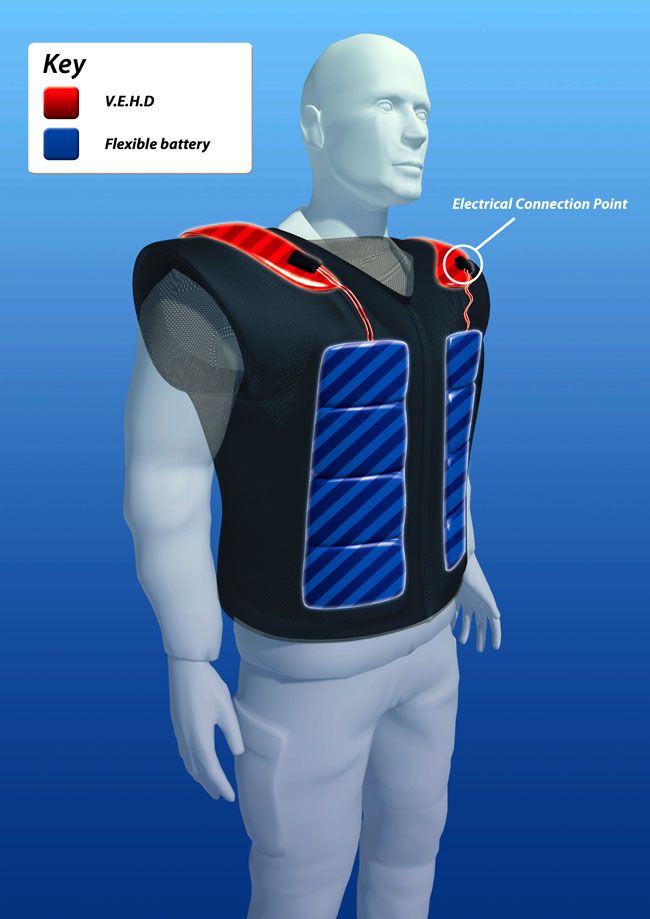Fashion Preview: Tomorrow's High-Tech Clothing

Fashion always keeps at least one eye on the future. Now scientists are lending a hand, developing tomorrow's super-powered clothing such as garments that can recharge your MP3 player and exoskeletons that enhance strength.
For instance, electronics could get recharged in the future simply by plugging them into your outerwear, because Australian researchers are designing clothing that can harvest energy from a person. The garments would incorporate devices to convert vibration energy from a person's movements into electricity. Advanced conductive fabrics would carry this energy to flexible batteries.
"It will look like an ordinary garment but have extraordinary capabilities," said Adam Best, principal research scientist with Australia's Commonwealth Scientific and Industrial Research Organization’s energy technology division. CSIRO scientists announced US$4 million in funds for such research Oct. 17.
"This kind of technology has important applications for soldiers in the field and could mean they no longer need to carry heavy batteries," Best added. "Essentially, they’d be wearing the battery, not carrying it."
Besides helping soldiers, these garments could also have civilian applications, such as powering radios, mobile phones, MP3 players or medical devices such as vital-sign monitoring systems. Solar-powered handbags could accomplish the same thing.
Underwear and sports uniforms could go weeks without washing thanks to self-cleaning fabrics developed by scientists working for the U.S. Air Force. The new technology attaches particles just nanometer or billionths of a meter wide to fibers using microwaves. These nanoparticles repel water, oil and bacteria.
Advanced materials could also help serve as armor. For instance, future yarns made with carbon nanofibers could yield bulletproof uniforms stronger than Kevlar, and complex compounds could lead to soft helmets that turn hard in a crash.
Sign up for the Live Science daily newsletter now
Get the world’s most fascinating discoveries delivered straight to your inbox.
Not all the potential fabrics of tomorrow are necessarily high-tech. For instance, chicken feathers, rice straw and other castoffs of the farming industry could get transformed into fabrics resembling wool, linen or cotton, helping reduce the use of petroleum-based synthetic fabrics such as polyester.
Scientific advances are also creating wool that doesn't itch or shrink. Researchers at the USDA developed a "bio-polishing" technique that bleaches and partially digests wool, smoothing out the fibers.
And robotic exoskeletons could help soldiers shoulder heavy packs and help people walk. But not all electronic garments have such serious aims—some might serve as video gaming consoles in a perfect blend of high technology and haute couture.
- Quiz: Great Inventions
- Self-Cleaning Underwear Goes Weeks Without Washing
- New Wool Doesn't Itch or Shrink











